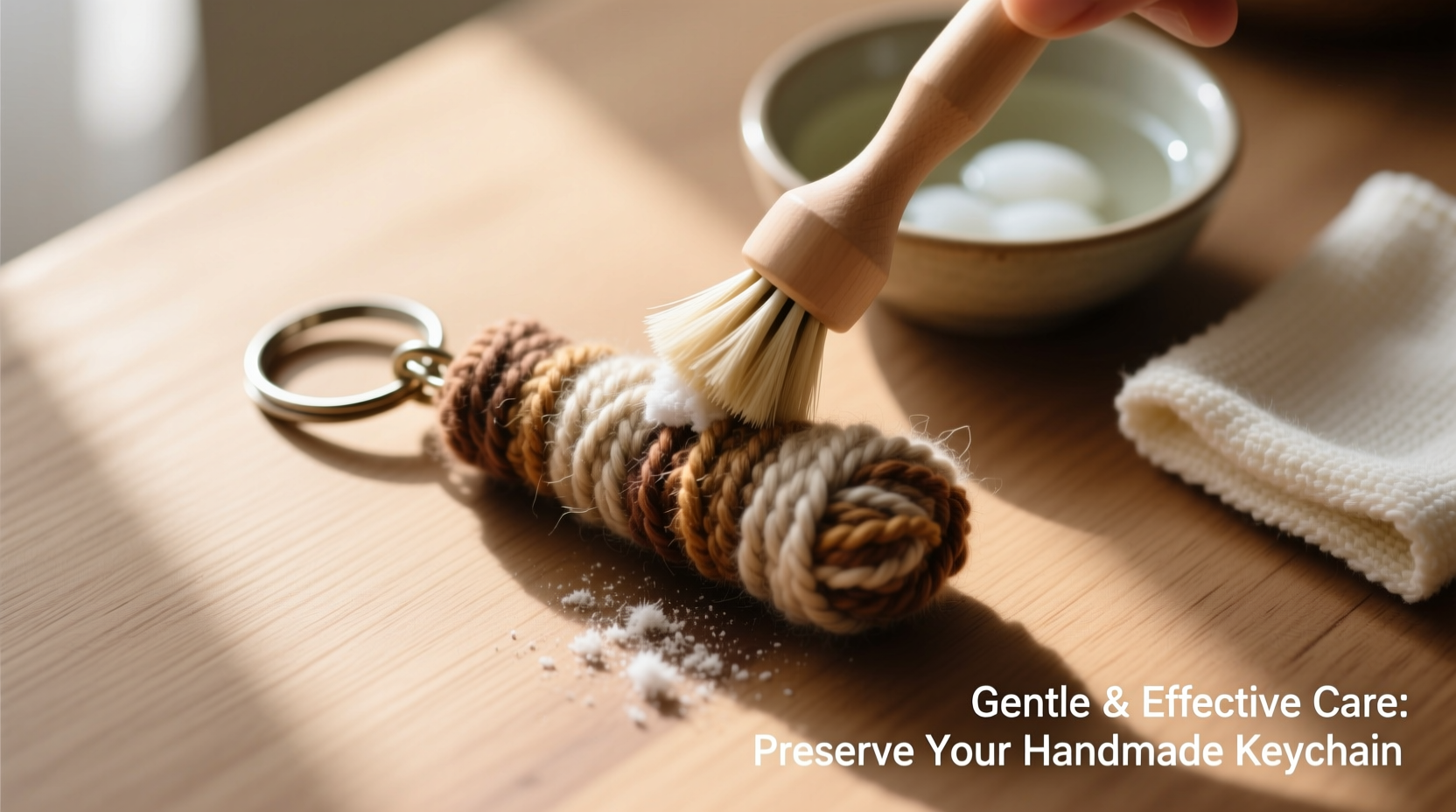Handmade yarn keychains are more than just functional accessories—they’re small works of art. Whether crocheted, knitted, or woven with care, they carry personality, creativity, and often sentimental value. But like any textile item exposed to daily use, they can accumulate dust, oils from hands, and accidental spills. Cleaning them improperly—using harsh detergents, hot water, or vigorous scrubbing—can lead to fraying, shrinking, fading, or misshaping. The good news is that with the right approach, you can keep your yarn keychain looking fresh and vibrant without risking damage.
Understanding Your Yarn: Why Fiber Matters

The first step in safe cleaning is knowing what your keychain is made of. Different fibers react differently to moisture, heat, and agitation. Most handmade yarn keychains are crafted from one of the following:
- Acrylic: Synthetic, durable, and colorfast. Resists shrinking but can pill or lose softness if treated roughly.
- Wool: Natural, warm, and elastic. Prone to felting (matting) when exposed to heat and friction.
- Cotton: Breathable and absorbent. Can weaken when wet but generally holds shape well.
- Blends: Mixes like wool-acrylic or cotton-polyester. Behavior depends on the dominant fiber.
Always check if the maker has included a fiber label. If not, examine the texture and ask yourself: Does it feel soft and slightly springy? Likely wool. Smooth and cool? Probably cotton. Slightly plastic-like and very resilient? Likely acrylic.
“Never assume all yarns behave the same. A method safe for acrylic could ruin wool in minutes.” — Lena Torres, Textile Conservator at the Craft Heritage Institute
Step-by-Step Guide: How to Safely Clean a Yarn Keychain
Cleaning by hand is the only recommended method for delicate handmade items. Follow this timeline for best results:
- Pre-Cleaning Inspection (5 minutes): Check for loose threads, weak stitching, or areas of discoloration. Gently trim any stray fibers, but avoid pulling.
- Spot Test (10 minutes): Dampen a hidden corner with a mix of lukewarm water and a drop of mild detergent. Blot dry. Wait 30 minutes. If no bleeding, fading, or distortion occurs, proceed.
- Prepare Cleaning Solution (5 minutes): Fill a small bowl with lukewarm water (never hot). Add one drop of pH-neutral detergent like Woolite or baby shampoo.
- Gentle Soak (15–20 minutes): Submerge the keychain. Do not rub, twist, or agitate. Let dirt loosen naturally.
- Rinse Thoroughly (10 minutes): Drain soapy water. Refill bowl with clean lukewarm water. Swirl gently. Repeat until water runs clear.
- Drying (6–24 hours): Press out excess water with a clean towel—do not wring. Lay flat on a dry towel, reshape, and allow to air-dry away from sunlight or heat sources.
Do’s and Don’ts: A Quick Reference Table
| Action | Do | Don't |
|---|---|---|
| Water Temperature | Lukewarm (around 30°C / 85°F) | Hot or cold water |
| Detergent | pH-neutral, wool-safe, or baby shampoo | Bleach, enzyme cleaners, or dish soap |
| Agitation | Minimal swirling only | Scrubbing, twisting, or wringing |
| Drying | Lay flat, reshape, air-dry indoors | Hang, use a dryer, or place near radiator |
| Stain Removal | Spot-clean with diluted vinegar (for organic stains) | Use rubbing alcohol or stain removers |
Real Example: Reviving a Gifted Keychain
Sophie received a lavender-colored yarn keychain from her grandmother, knitted from a soft merino-wool blend. After six months of daily use, it had darkened around the edges from hand oils and collected lint from her bag. Worried about ruining it, she avoided washing it for months. Finally, she followed the gentle soak method using baby shampoo and lukewarm water. She soaked it for 18 minutes, rinsed twice, and laid it flat on a white towel. Within 12 hours, it was dry—its original softness restored, colors brightened, and shape intact. “I was amazed,” she said. “It looked almost new, and I didn’t lose a single stitch.”
Tips for Preventative Care and Maintenance
Regular cleaning isn’t always necessary—prevention is often more effective. Small habits can significantly extend the life and appearance of your yarn keychain:
- Rotate keychains weekly to reduce wear on a single piece.
- Keep away from perfumes, lotions, and hairspray, which can degrade fibers over time.
- Store in a breathable cotton pouch when not in use for long periods.
- Use a soft clothes brush to remove surface dust every few weeks.
- Avoid attaching to wet keys or placing in damp environments like gym bags.
Frequently Asked Questions
Can I machine wash my yarn keychain?
No. Even on a delicate cycle, the agitation and temperature fluctuations can cause felting, especially in wool or animal fibers. Hand washing is the only safe method for handmade items.
What should I do if the colors bleed during washing?
Stop immediately. Rinse with cold water and lay flat to dry. In the future, avoid washing dyed yarns together unless you’ve confirmed colorfastness. Some hand-dyed yarns are particularly sensitive and may require professional textile cleaning.
How often should I clean my yarn keychain?
Every 2 to 3 months with regular use. If used seasonally or decoratively, once per season is sufficient. Spot clean minor marks as needed instead of full washes.
Conclusion: Care That Honors Craftsmanship
A handmade yarn keychain is a small expression of creativity and care. Preserving it properly isn’t just about cleanliness—it’s about respecting the effort behind every loop and stitch. With mindful handling, the right materials, and a patient touch, you can maintain its beauty for years. Gentle cleaning doesn’t take much time, but the impact is lasting. These little treasures deserve attention not because they’re expensive, but because they carry meaning.









 浙公网安备
33010002000092号
浙公网安备
33010002000092号 浙B2-20120091-4
浙B2-20120091-4
Comments
No comments yet. Why don't you start the discussion?